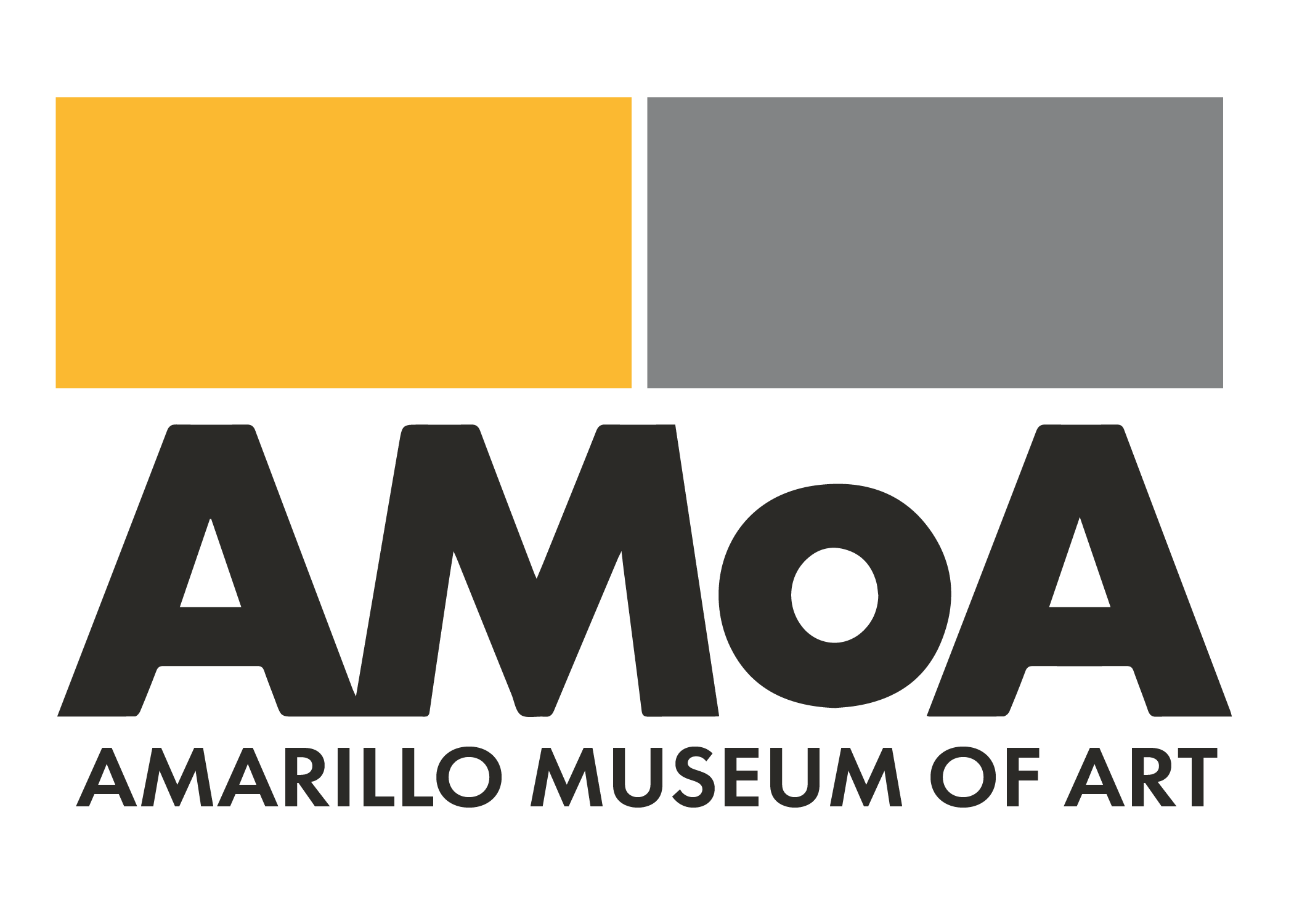Pop Imagery, is a group of works from the AMoA permanent collection that reflects upon the Pop Art movement. Works included are from artists working during the era from the mid-1950s –the 1970s as well as more recent works from contemporary artists that are directly influenced by Pop Art themes. Pop was the defining movement that ended Modern Art and began the Post-Modern influx of conceptually driven art. Pop Art focused on imagery that was derived from popular culture i.e. movies, celebrities, consumer goods, advertising, and comics. Please take time with each piece to look closely and discover the artist’s intent and your own interpretations. Interact with the activities to make your own artworks to take home.
Andy Warhol, Cow
Warhol’s “Cow Series” were completed between 1966 and 1971. The idea originally came from the famous art dealer, Ivan Karp who urged Warhol to paint a cow because they are so pastoral and such a durable image in the history of art. The first iteration of the cow prints was the pink cow on a yellow background that was used as wall paper to cover the entire wall of the Leo Castelli Gallery in New York City. Warhol later completed several different striking color combinations of the cow print on wall paper.
For this activity make a collage or drawing on cardstock inspired by Andy Warhol’s iconic cow print. Utilize the picture of a cow, construction paper, map colors and crayons to create your unique version. Pop artists used bold color combinations, familiar imagery, and repetition to capture the viewer’s imagination. Use these design techniques to make your artwork pop!
Andy Warhol (American, 1917-2009), Cow, 1971, Screen- print on wallpaper, Museum purchase.
Robert Kushner, Poppy
Much like his Pop Art contemporaries, Robert Kushner draws inspiration from commercial forms of art. He chooses to embrace the purposefully beautiful qualities of interior design and the decorative arts. He finds inspiration from floral design, patterns and textiles.
For this activity create a collage or drawing on cardstock inspired by Kushner’s Poppies and his interest in pattern and decoration.
Robert Kushner (American, b. 1949), Poppy (State II, Gold Toned), 1988, Lithograph on paper.
George Rodrigue, Big Texan Sky
The first “Blue Dog” painting was originally conceived in 1984 as an illustration of loup-garou for a book of Cajun ghost stories. The loup-garou was a mythical werewolf dog from French legends. As a child, Rodrigue’s parents told him of the legendary loup-garou who prowled the swamps around Louisiana and came out during a full moon to eat misbehaving children. The artist had no image for the loup-garou, so he used the image of his beloved dog Tiffany. His spaniel terrier mix had died several years before, but he found photos of her that served as a perfect prototype. Since then the Blue Dog has gained international popularity and has appeared in front of backgrounds of places all over the world and has been outfitted in an array of accessories.
For this activity imagine if your own beloved pet could trade places with the Blue Dog. Use colored pencils, pencils and crayons to illustrate what your own pet would look like in place of the Blue Dog. What would be in the background? What could you add to their outfit? What name will you give your new creation?
George Rodrigue (American, 1944-2013) Big Texan Sky, 2012, Gift of the artist.
Donald Sultan, Two Buttons
Although Donald Sultan came along after the rise of Pop Art, he employs similar themes and methods to his oeuvre. Like the Pop artists before him, Sultan’s images are inhabited with ordinary objects that are elevated to elegantly simple designs and at times are monumental in size. These two buttons in reality are small and seemingly insignificant. It’s the job of the artist to transform the ordinary to be extraordinary.
For this activity the challenge is to choose one of the small ordinary objects provided and draw it in a way that changes its scale from being small to large and awesome.
Donald Sultan, (American, b. 1951), Two Buttons, 1996, Three-color lithograph on paper, Gift of V. J. Jordan, Jr.
Ray Madison Com’on Hon
In the mid-1990s Ed and Linda Blackburn began a formal collaboration on a series of paintings under the moniker "Ray Madison." This series chronicled the often-cosmopolitan art world adventures of gumshoe detective Eddie Leon, as he investigated an art heist. Similar to Roger Shimomura, Ray Madison borrowed the comic style of storyboards, speech bubbles, and onomatopoeias. Onomatopoeias are those words used for sounds like POW, BLAM, ZAP,WHAM etc..
While creating your Pop inspired storyboard consider where you can use speech bubbles and those odd shaped onomatopoeias.
Ray Madison (aka Ed and Linda Blackburn, Americans, 1940-2022), Com’on Hon, 1999, Ink and colored pencil on paper, Gift of Sally Bivins
Roger Shimomura, Five Views of the Inscrutable Neighbor
Roger Shimomura’s work pulls inspiration from popular American culture and traditional Japanese aesthetics. Pop artists were interested in bringing together lower forms of art like comics and advertising together with higher forms of fine art. In this series of lithographs Shimomura has composed the layout in a storyboard much like comic books. Japanese woodblock prints were also composed as storyboards, or in framed sections arranged in order to tell a story.
For this activity use the printed storyboard to draw your favorite characters in scenes that flow together as a story. Pop artists often simplified scenes to make them visually appealing.
Roger Shimomura (American, b. 1939), Five Views of the Inscrutable Neighbor, 1995, Lithograph on paper, Gift of V.J. Jordan, Jr.







